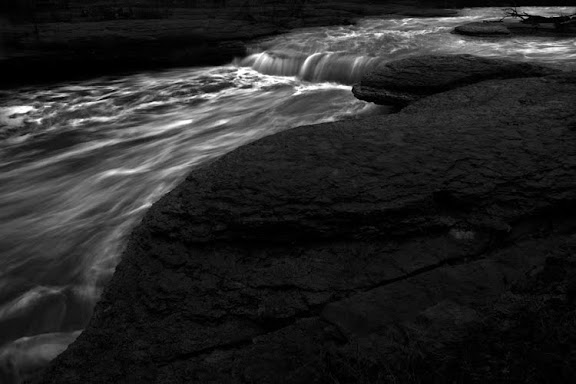Category: Articles
January 23, 2012


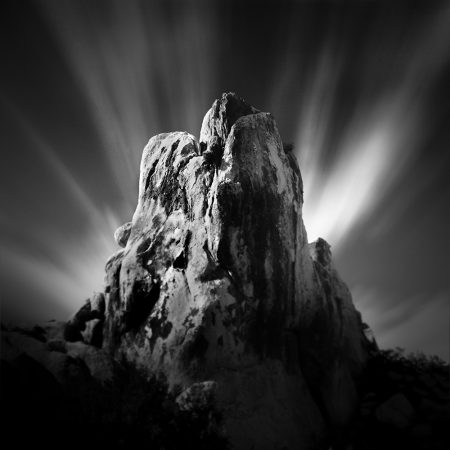
You just have to love Irony.
Yesterday my interview with Aline Smithson of LENSCRATCH was published and on the same day I created this image in Joshua Tree.
To understand the irony, read the interview and please do not say “this reminds me of an Ansel Adams photograph!”
http://www.lenscratch.com/2012/01/success-stories-cole-thompson.html
I’m still wandering in the desert and having a wonderful time with no cell or internet service. It’s been a great time of reflection and seeking out creativity, and I’m coming home with a real smorgasbord of images.
Back to seeing!
Cole
September 23, 2011

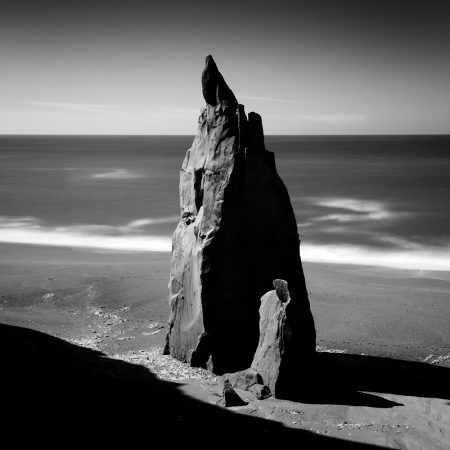
A Close friend sent me this article to consider and I really do not know where I stand on this issue.
I donate images to charity events. I have donated to some of the big name national events but mostly I donate to local causes such as our High School Arts Program, local Food Banks and Women’s Shelters.
Part of me understands what he is saying, but part of me disagrees. What are your thoughts?
Cole
The Career Benefits of Boycotting Charity Art Auctions
By Matt Gleason
Posted: 06/ 8/11 12:25 PM ET
There is a tradition of auctioning original works of art donated by artists to raise money for charitable causes. There are many good causes that hold such events. No matter how good the causes, though, I have come to the conclusion that artists must stop donating to every single one of them.
Don’t ever donate your art to a charity auction again. Half a century of charity art auctions have changed the way collectors buy art. These fundraisers have depressed prices of art across the board and kept artists in a subordinate position that has no career upside or benefits.
Instead of tossing away another great artwork to a good cause, join the good cause of boycotting charity art auctions. When you join this cause …
•You stop taking revenue out of the art world
•You stop shifting art collector dollars to the bottomless pits of recurring annual Beg-A-Thons
•You don’t contextualize your art as being a synonym of pretentious panhandling
•You don’t announce that your art is worth low bids
•You don’t risk that your work will be publicly seen getting no bids
•You don’t empower strangers to devalue your artwork
•Most importantly, you stop publicly proclaiming that you give your art away
The argument against me is simple: Donations of art to charity auctions raise money for good causes and raise the profile of artists who put their art in the public eye. It is a good argument. It has worked well. This seductive sales pitch has pulled in countless millions of dollars over the past few decades.
Problem is, this argument has not lived up to its bargain. Sad news: Your profile got humiliated because the collector got such a bargain on your art. If your art was one of dozens of trinkets on a wall with a hundred other artists, your profile actually disappeared there in the crowd anyway.
I would love to hear the story of the artist whose career rocketed to success because he or she donated a work to a charity auction and this act alone tipped the first domino toward an avalanche of success coming his or her way. This narrative is always implied. I’ve never seen it happen.
Charity art auctions are the emptiest of promises to artists: you give us your work, you get nothing in return except a party invite to an event where you are a second class citizen. Watch as the price of what you really will let your work go for is nakedly advertised to the select group of people to whom your work is meant to be seen as rare and desirable.
Suppose you want to at least deduct a donation of your art to the charity, guess what? The law only allows an artist to deduct the cost of materials. Meanwhile a collector can buy your work for the minimum bid, have it appraised at its full retail value and donate it to some other good cause for that top dollar amount.
As for the merits of the infinite number of good causes out there, what is the value in giving up a painting that would sell for a thousand dollars retail in order to see it raise 50 Bucks for that cause? Pick one charity, donate generously and keep the collectors assuming that the price you ask at the gallery is the best and only price they are going to get.
Someone has to be the bad guy here, so you can blame me for inspiring you to donate cash to a good cause and to keep your art career safe from the bargain bin. Print this out and send it with your regrets to anyone asking you to devalue your work in the name of glamorizing their efforts on behalf of yet another worthy cause in a world of infinite and endless good causes. Tell them the art stops here.
Matt Gleason
August 16, 2011
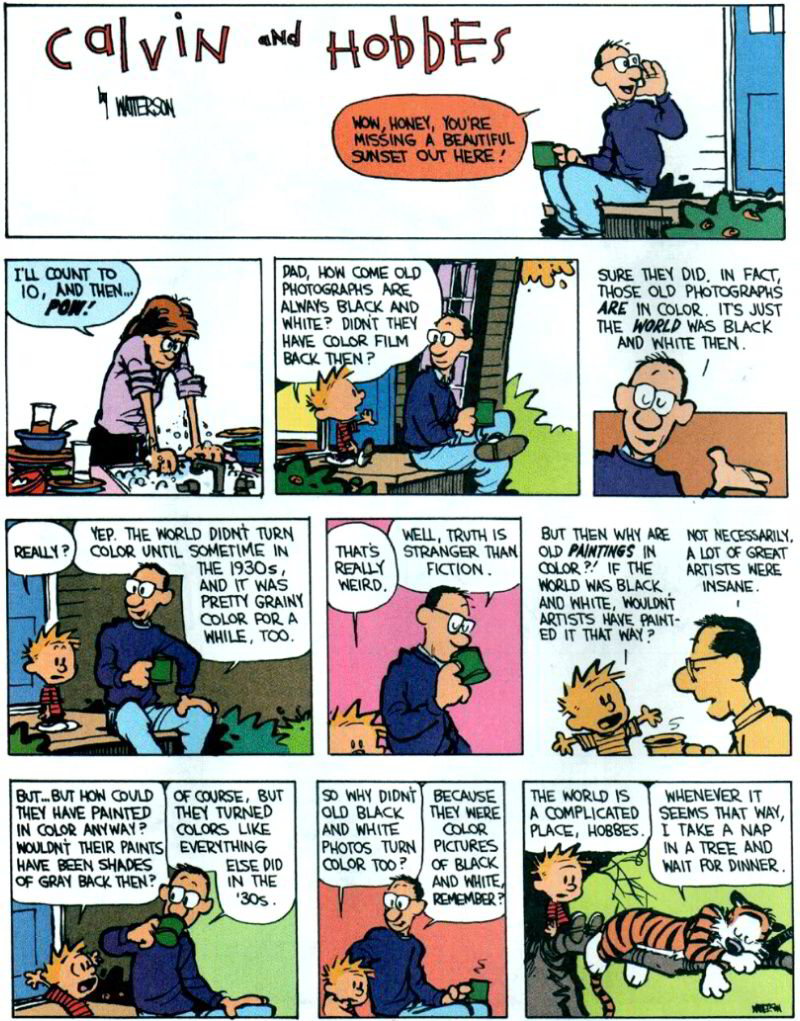


The truth about Black and White (according to Calvin and Hobbes).
http://www.reoiv.com/random.asp?img=dadbandwandcolour.jpg&page=2
Cole
P.S. Thanks to Ed Book for sending this to me.
June 1, 2011
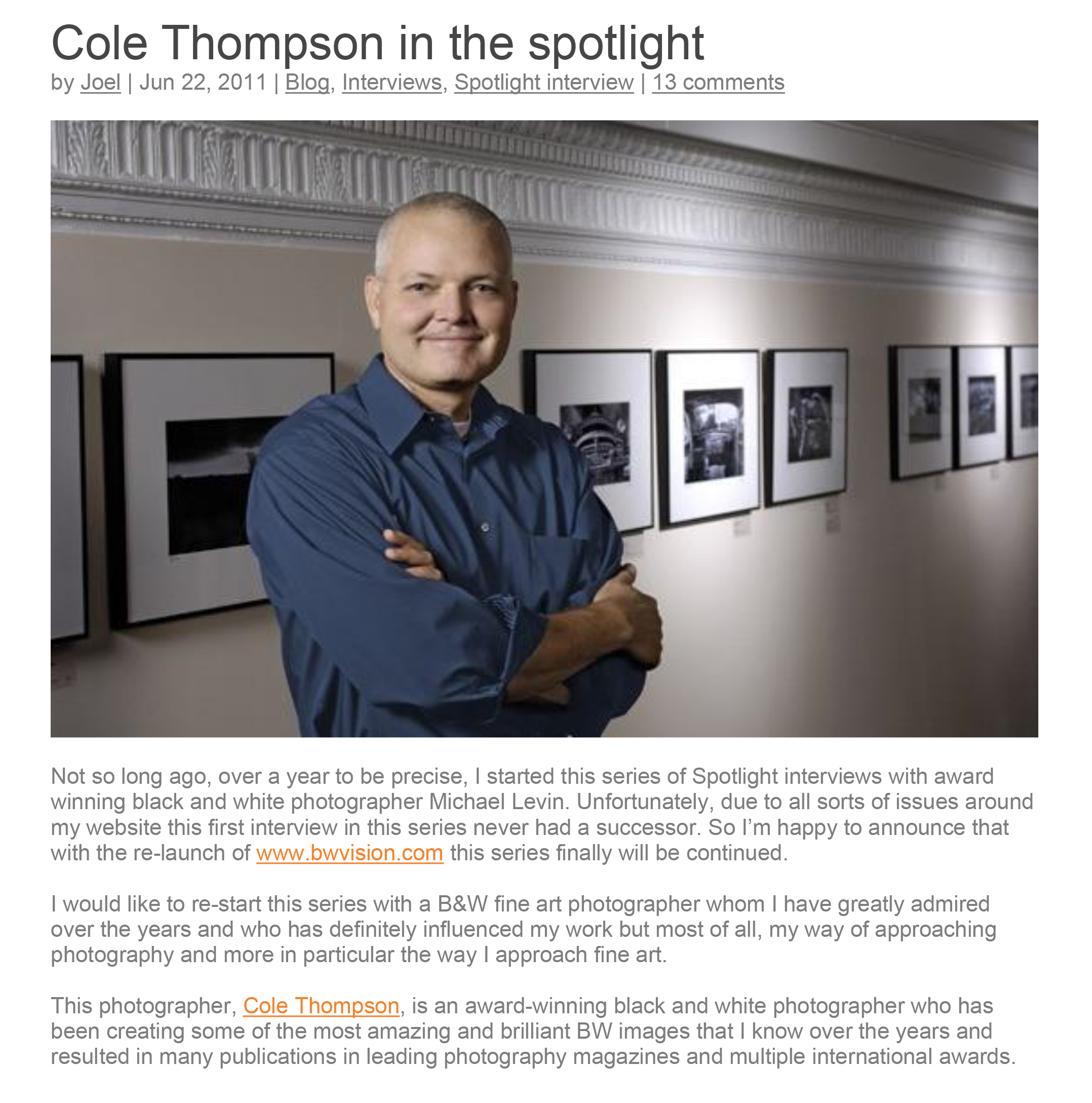
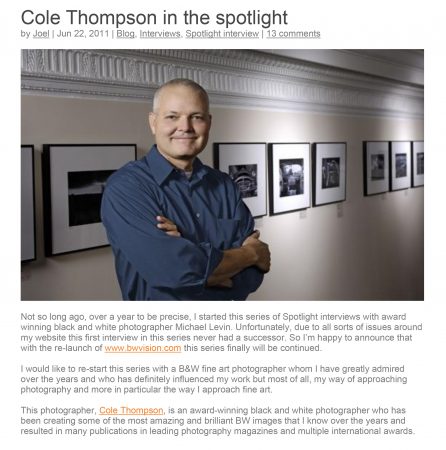
I don’t know if you’re familiar with Joel Tjintjelaar, but he’s a good friend of mine from the Netherlands. He’s also an amazing B&W photographer AND owns and runs BWVision.com. Joel is really busy!
Joel just interviewed me for his blog and you can read it here: BWVision Interview with Cole Thompson
You’ll want to keep an eye on BWVision.com over the next several weeks.
Cole
P.S. This is an image from my trip to Hawaii last week. A few more to come in my next newsletter.
July 3, 2010
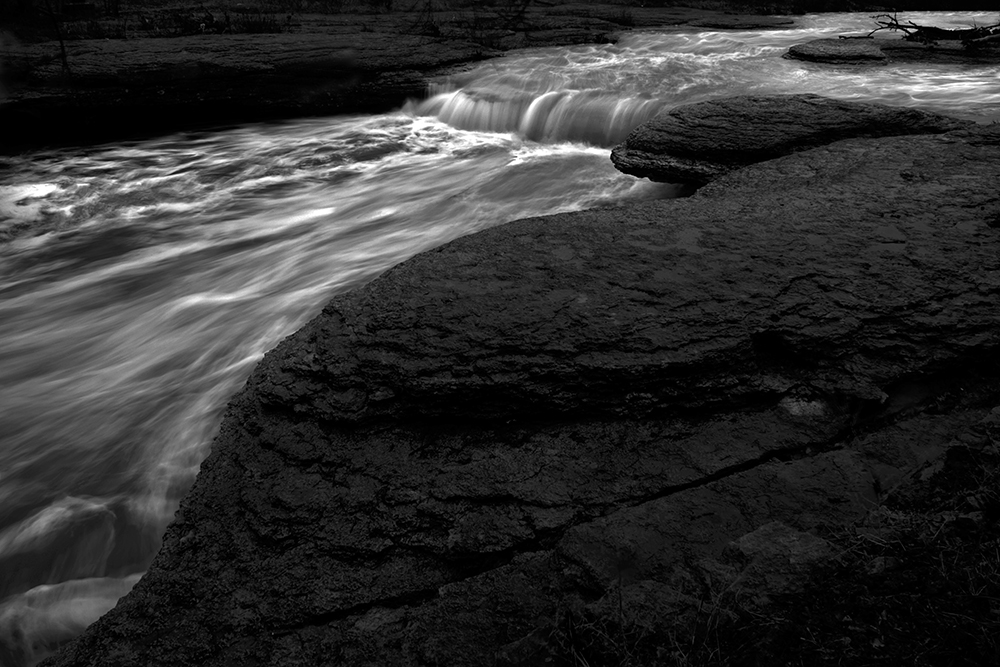
Focus on Singh-Ray Filters
Showcasing images made with Singh-Ray photographic filters
Colorado photographer Cole Thompson is dedicated to creating his fine-art images and essays in dramatic black and white. A major feature of his work is the use of very long time exposures of 30 to 90 seconds and longer. “I believe that long exposures and water are a natural match. Portraying water as fluid seems so much more natural to me. My Singh-Ray Vari-ND lets me easily explore exposures of varying durations by simply adjusting the density from about 2 stops up to 8 stops, or anywhere in between.
Dark Waters
1-second exposure
“My strong attraction to long exposures came about because of water. I was intrigued by the way moving water looked at different exposures; a 1-second image looked so completely different than a 10- or 30-second exposure. My very first long exposure of water was this 1-second image entitled Dark Waters created on the Blue River in Kansas City.
Lone Man No. 35
30-second exposure
“This led to my photographing water in all kinds of waters and often using a very long exposure to create a smooth, milky white look to the water as in Lone Man No. 35 created in the Honduras.
Poudre River Spillway
30-second exposure
“Each exposure length can create a completely different look. So I’ll photograph the same scene over and over from 1 to 30 seconds to get the right feel. Here is a very simple image of water flowing over a spillway on the Poudre River in Colorado.
Rocks and Mist
30-second exposure
“Another factor affecting how the water will look is the speed at which it is moving and the direction it is moving in relation to the camera. In Rocks and Mist created in La Jolla, the waves were rushing in and out giving the water an appearance of fog.
Rushing Waters
30-second exposure
“Likewise in Rushing Waters the water is often mistaken by viewers as a cloud flowing over a mountain rather than the reality; rushing waters flowing over a large rock near Washington D.C.
Fluid Water No. 6
10-second exposure
“Many of my images are created at 30 seconds, but sometimes a faster exposure allows for more definition in the water — such as in Fluid Water No. 6 which was a 10-second exposure created on the Poudre River.
Primordial Soup
30-second exposure
“The speed of the water and its direction of movement often affect the look of the ‘fluid water’ as in Primordial Soup created on the Oregon Coast. In the foreground there is a very slow-moving pool of water, while in the background the crashing waves of the beach are rendered soft and without definition.
“Getting long exposures during the day requires a great deal of neutral density. I use the Singh-Ray Vari-ND and then stack the Mor-Slo 5-stop ND filter on top of it, giving me about 13 stops of ND. This will allow me under most conditions to get a 30-second exposure in bright sunlight.
“I use the camera’s meter to determine exposure and am very careful to block stray light from entering the eyecup while metering. I usually start with a 1-second exposure and then work my way up: 5, 10, 50, 20, 25 and 30 seconds. You’ll be amazed at how different each shot can look.”
Another tip from Cole: “Turn off the long-exposure noise reduction and use the mirror lockup for exposures in the 1 to 5-second range — mirror lockup is not needed for longer exposures.”
To see more of Cole’s work and learn more about his creative techniques, you’ll want to check out his previous stories on this blog and visit his own website and blog.
June 23, 2009
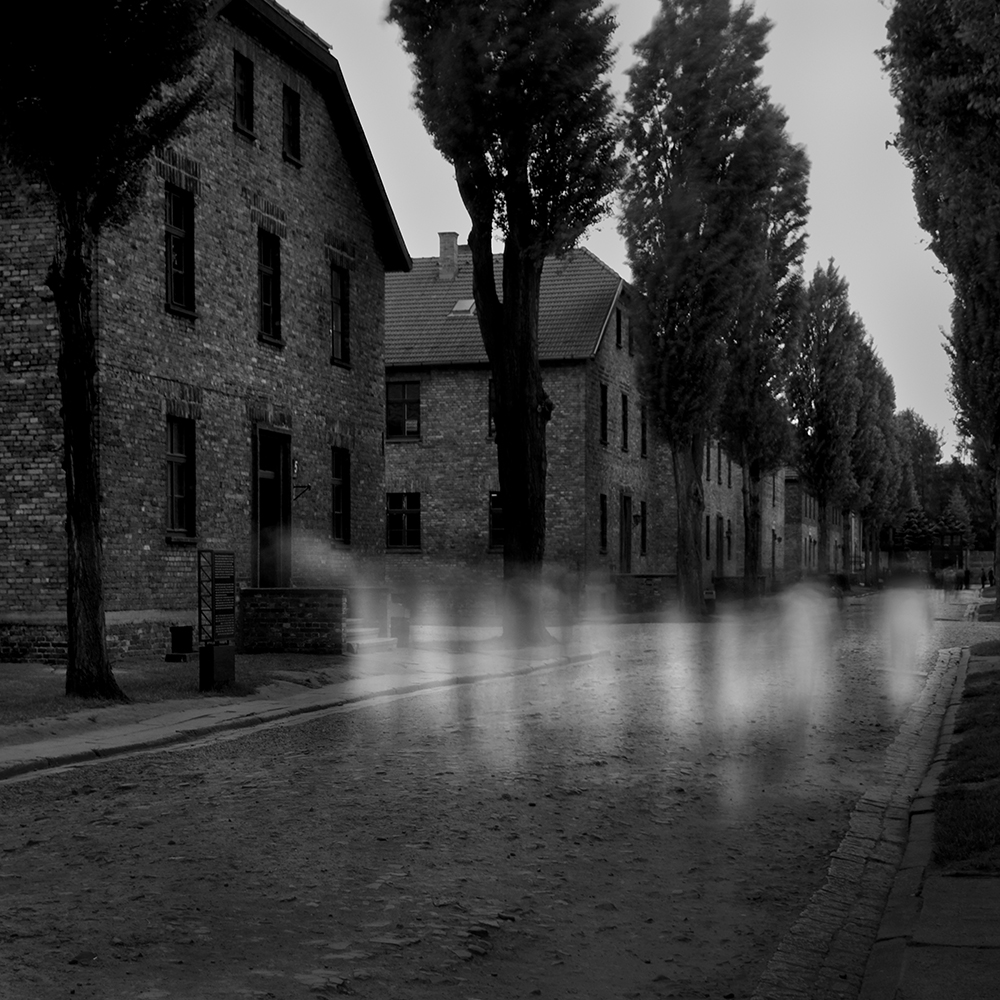

You’ve heard me rave about the Singh-Ray Vari-ND filter, the one that I use for many of my images? My work and a short article was recently featured on their blog.
Click Here to Read the Singh-Ray Blog Entry
Cole

